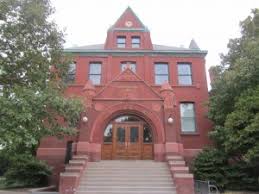Architecture Program

Architecture Program: Faculty Scholarly and Creative Activity
Document Type
Article
Date of this Version
12-2012
Citation
Preservation Education & Research, Volume 5, 2012, pp. 29-44.
http://www.ncpe.us/publications/volume-5-2012/#.U2FyWOZdVyg
Abstract
This is a study of how the architectural ruins of Kenilworth Castle contributed to the historical imagination of Sir Walter Scott (1771-1832) and how he forged their literary restoration. The castle, located between Warwick and Coventry, was first constructed in the early twelfth century by Geoffrey de Clinton, the royal chamberlain to King Henry I (r. 1100-1135). Major additions were made by King Henry II (r. 1154-1189); King John (r. 1199-1216); John of Gaunt (1340-1399), son of King Edward III and Duke of Lancaster; and Robert Dudley (1532-1588), Earl of Leicester. The castle played a number of important roles throughout English history, before it was slighted in 1650 during the Civil Wars. The building lay in ruins in Scott’s time, and has been managed since 1984 by English Heritage. The fascination with ruins that began in the middle of the eighteenth century in England often has been connected to the romantic or picturesque movement, which has tended to exclude from discussion the physical environment. This study treats the physical properties of the ruins as important contributors in engaging the viewer’s imagination. Scott, the literary author, has been selected as an exemplary visitor to the site because of his acute sensitivity to the environment and keen ability to record his reactions. He is said to have asked searching questions and to have spent several hours in contemplation during his second visit to Kenilworth Castle in 1815 (Hewitt 1993b, 473). This study compares the three modes of the castle – as it was described in Scott’s historical novel Kenilworth: A Romance (1821); as Scott confronted it in real life; and as it was depicted in historical documents. Drawing from this nineteenth-century instance, the study aims to address the questions of whether to restore the castle and to what extent. These debates are still relevant to today’s historic preservation practice.
Included in
Architectural History and Criticism Commons, Historic Preservation and Conservation Commons


Comments
Copyright © 2012 Preservation Education & Research. Used by permission.